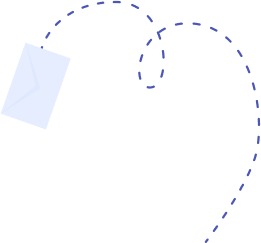What is a LAMP stack?
Introduction
The LAMP stack is a set of technologies used for web development. It serves as the foundation for the majority of websites and applications in use today.
This stack offers one of the most popular ways of developing a complete application.
Components
LAMP is an acronym for Linux, Apache, MySQL / MariaDB and PHP / Perl / Python. These softwares are responsible for creating web applications. Each of these components has a significant function in the stack:
- Linux operating system. This operating system serves as the basis of the LAMP stack. Linux is a reliable and stable system. It is free and open source, so you have access to the source code and can customize it. In comparison to other operating systems, it does not slow down over time and it is less vulnerable to viruses.
- Apache web server. It hosts about 70% of all websites in the world. It handles HTTP requests to access a web page and takes you to said web page. Apache can be customized to meet specific needs due to its extensions and modules.
-
MySQL / MariaDB database. MySQL is a relational database management system,
used to store and manage data through SQL (Structured Query Language). It has been the most
commonly used RDBMS for years and it powers a wide range of websites. It is available for free,
easy to use and offers a lot of functionality.
MariaDB is a newer RDBMS that can be part of the LAMP stack. It is designed to be a drop-in replacement for MySQL. You can switch from MySQL to MariaDB with ease since they are completely compatible. - PHP / Perl / Python programming language. The server side programming language is used to develop dynamic websites or web applications. All three of these languages are general purpose, so they can be used to meet various development needs. They can also connect with the database.
How it works
The Apache web server receives the request from the browser and proceeds to search for the file. Depending on the type of request, the web server takes the next steps.
a. If the request is for a HTML file
Once the file is found, the server processes it and all its components (CSS stylesheets, images etc.). The final result is a HTML web page which contains the information the user has requested. The web server sends the requested page back to the browser to display.
b. If the request is for a PHP file
In this case, the programming language can be utilised to create a dynamic web page with the help of a database system.
Apache passes the request to the programming language, which loads the file and executes the code that is in it. The programming language also requests data from the database if it is referenced in the code. Using the code in the file and the data returned, it creates the HTML required by the browser to display the web page.
The web server will take the output and send it back as a response to the browser.
In case the pages don’t exist, the browser will display an error message.
Benefits of the LAMP stack
With all of its advantages, it comes as no surprise that the LAMP stack is so common in the development sector. It is effective for the reasons stated below:
- Availability: It can be installed on a range of platforms.
- Free software: By using the LAMP stack, you avoid paying licensing fees. All of its components are freely available to anyone who wishes to use them.
- Customisation: Some LAMP components come with a wide range of modules that provide additional functionality to suit your needs. An example of this is Apache’s modular design.
- Community support: All four elements of the stack are widely used. Because of this reason, there is a huge online community that can offer insight on topics related to the stack. If problems or questions arise, you can quickly find a solution.
- Security: It is a safe technology because of its secure architecture and encryptions.
LAMP variations
You can use other components for the stack depending on specific needs. These other alternatives consist of different combinations of software such as:
- WAMP (Windows, Apache, MySQL, PHP / Perl / Python)
- MAMP (MacOs, Apache, MySQL, PHP / Perl / Python)
- LAPP (Linux, Apache, PostgreSQL, PHP / Perl / Python)
- LEMP (Linux, NGINX, MySql / MariaDB, PHP / Perl / Python)
- XAMP (Cross-platform, Apache, MySql / MariaDB, PHP / Perl / Python)
Conclusion
The LAMP stack is a web development platform that uses Linux as the operating system, Apache as the web server, MySQL or MariaDB as the database and PHP / Python / Perl as the server side programming language.
It is flexible, which means it can be built on other operating systems and all of its other components are interchangable with other alternatives as well.




